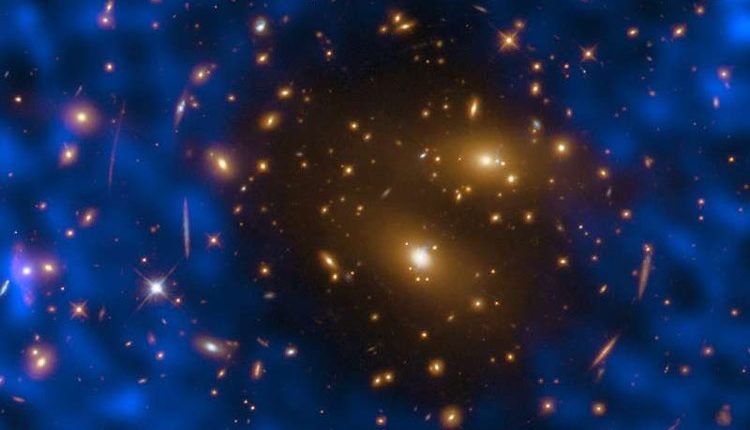Image of cosmic hole proves ALMA telescope’s ability
A radio ‘hole’ around a galaxy cluster 4.8 billion light-years away has been successfully imaged by researchers using the Atacama Large Millimeter/submillimeter Array (ALMA).
This is the highest resolution image ever taken of such a hole caused by the Sunyaev-Zel’dovich effect (SZ effect). The image proves ALMA’s high capability to investigate the distribution and temperature of gas around galaxy clusters through the SZ effect.
A research team led by Tetsu Kitayama, Toho University, Japan, and Eiichiro Komatsu, Max Planck Institute for Astrophysics, Germany, used ALMA to investigate the hot gas in a galaxy cluster. The hot gas is a key component to understand the nature and evolution of galaxy clusters. Even though the hot gas does not emit radio waves itself, which would be detectable with ALMA, the gas scatters the radio waves of the Cosmic Microwave Background and makes a “hole” around the galaxy cluster. This is called the Sunyaev-Zel’dovich effect (Note).
The team observed the galaxy cluster RX J1347.5-1145 located 4.8 billion light-years away. This galaxy cluster is well known among astronomers for its strong SZ effect and has been observed many times with radio telescopes. These observations revealed an uneven distribution of the hot gas in this galaxy cluster, which was not seen in X-ray observations. Astronomers therefore needed higher resolution observations; these however, were difficult to obtain with high-resolution radio interferometers as the hot gas in galaxy clusters is relatively smooth and widely-distributed.
ALMA utilized the Atacama Compact Array to overcome this difficulty, which provides a wider field of view with its smaller diameter antennas and the close-packed antenna configuration. By using the data from the Morita Array, astronomers can precisely measure the radio waves from objects extending over a large angle on the sky. With ALMA, the team thus obtained an SZ effect image of RX J1347.5-1145, with twice the resolution and ten times better sensitivity than previous observations. This is the first image of the SZ effect with ALMA.
“The new ALMA observation not only confirms the previous observations, but also provides an image with the highest resolution and highest sensitivity, which will open up a new era of SZ science,” Eiichiro Komatsu points out. “The mismatch between radio and X-ray observations leads us to the conclusion that this cluster is undergoing a violent merger, and we think that there is a clump of gas which is incredibly hot.”
The Cosmic Microwave Background (CMB) is the remnant radiation from the Big Bang and its radio waves reach us from every direction. When CMB radio waves pass through the hot gas in a galaxy cluster, the radio waves interact with high-energy electrons in the hot gas and gain energy. As a result, the radiation is shifted from radio waves to higher energy. Observing from the Earth, the CMB in the original energy range has less intensity near the galaxy cluster. This is called the “Sunyaev-Zel’dovich effect,” first proposed by Rashid Sunyaev (currently director at the Max Planck Institute for Astrophysics) and Yakov Zel’dovich in 1970.


Comments are closed, but trackbacks and pingbacks are open.